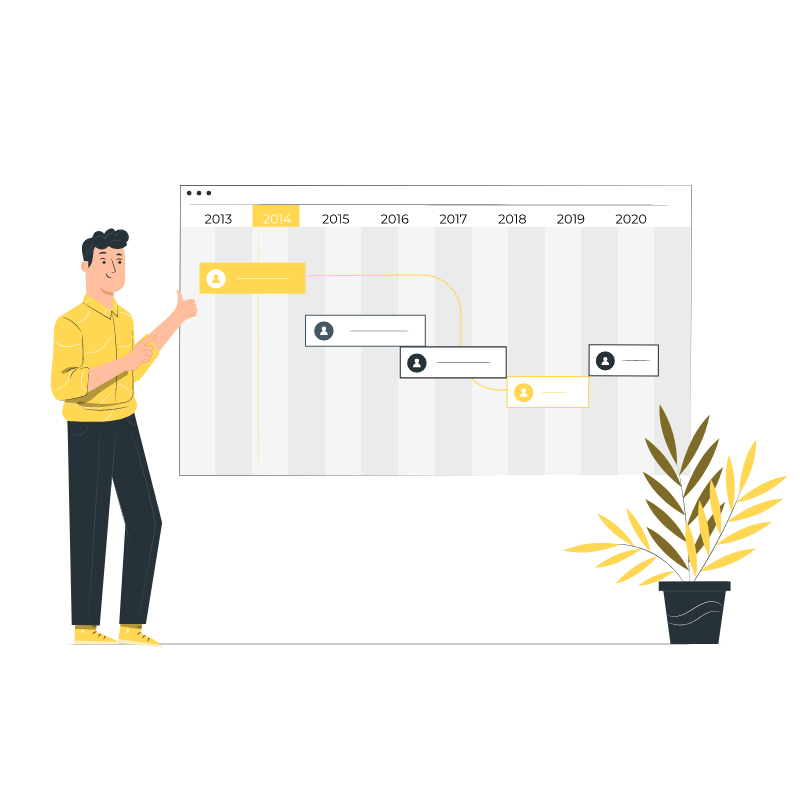


The Roadmap
In the desired roadmap activity, you will discuss your perspectives on the current state of the project and will define and arrange tasks and action points for the next steps in the facade process. You will integrate all of your individual efforts and plans to deliver a shared overview of which steps you will take next. All internal timelines of the different people and groups must be discussed, as everyone has other internal processes and regulations to carry out in this project.
Remember to bring outcomes from the reflection activity (parameters and lessons learned) to check whether your roadmap responds to the feedback from all the people involved.
The elements of the desired roadmap activity are:
-
Parameters and lessons learned from the reflection activity.
-
A space reserved for you to share the activities you are currently working on in the project.
-
Instructions on which steps we recommend you to follow in this exercise.
-
A timeline template with slots for you to define and fill in the different years and seasons in which you expect the project to take place.
-
Sticky notes of one color, to fill in per group involved, the activities done by this group.
-
Sticker rectangles for you to write down the activities understood and agreed upon as a group (after discussing your diverse perspectives on the project).
-
Sticker in diamond form for you to highlight when an activity is a decision moment.
-
Sticker stars for you to highlight when an activity is a milestone.
-
Sticker bars for you to write on and show the different processes, timings, and phases inside the facade project, as well as the different projects that share resources with the facade project.
-
Sticker arrows for you to fill in the tasks needed to accomplish a specific activity.
-
Speech bubble stickers allow you to write down the type of communication or participation tool you need to realize certain activities or make certain decisions. Note that some of these stickers already have examples of participation and communication tools.
-
Circular tokens to write down the initials of all the groups and partners of the facade project.
-
A series of questions that encourage you to think about the reasoning behind the elements you are planning in the roadmap.

01
What are you currently working on
The beginning of this activity is a moment to share your individual efforts within the project. Some of the people involved might not be aware of the tasks and responsibilities that the other participants have. It is also a moment to ask for more information about those activities and the reasons behind them.
02
Phases
In this part of the activity, you will discuss the different phases of the internal timelines of each group involved to make a more extensive overview of the project. Every person or group involved sees the process of the project differently. Sharing this information helps you understand how others see the process and what everyone needs to accomplish.

Illustration by Storyset
03

Illustration by Storyset

Decision-making points, Milestones and
Moments of change
It is fundamental that you clearly communicate when decisions need to be taken for everyone to keep on track within the project. Here, you will identify decision-making moments, milestones and other moments of change. A series of questions in the roadmap exercise will stimulate you to reflect if your needs are being fulfilled with the planned activities.
In the Miro, some graphic components will help you visually identify these decision-making moments and the different timelines managed by the various stakeholders. Note, that it is essential to visually distinguish between components that all the relevant people involved have already approved (Polished - Sticker), and components that still wait for approval from some people involved (Sketch - Sticky Note). This is necessary, as you will work in different iterations, and you want to keep track of changes and decisions that you will make in the process.
04
Who is involved in
these decisions
After the decision-making moments are clearly defined, you will have to discuss who is involved in which part of the activities surrounding the decision-making moment or milestone. Define who will need to participate and what information is from whom. We have provided some examples of communication tools in the activity.

06
Tasks
At the end of this activity, you will have a roadmap that visually organizes the input from all people involved in the management of the project. Here you will be able to identify gaps in the available information or missing tasks and define action points on how to obtain this information.

05

Communication
Discuss how you want to communicate with the different groups involved in the Reigersbos project for each decision-making process or milestone. Here you need to decide in which level people involved need to participate, for example: who will only be informed, who will need to attend a meeting, or who will need to provide particular input. In the template, we have given some examples.
